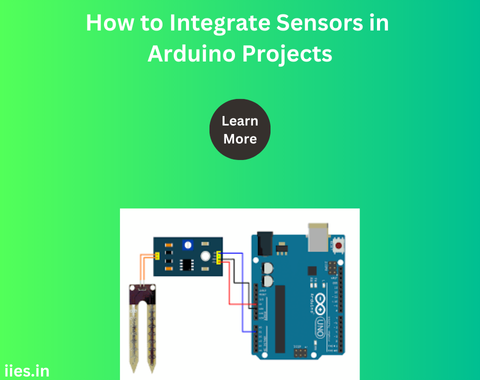
Integrating sensors into Arduino projects is a fundamental aspect of creating interactive and responsive systems. Sensors allow Arduino boards to perceive the environment by converting physical phenomena into electrical signals that can be processed by the microcontroller. Whether you’re working on a simple temperature monitoring system or a complex robot, understanding how to integrate sensors is crucial. This article will provide an overview of the theoretical concepts needed to successfully incorporate sensors into your Arduino projects.
What are Sensors?
Sensors are devices that detect and respond to some type of input from the physical environment. The input could be light, heat, motion, moisture, pressure, or any other environmental factor. The output is typically an electrical signal that can be measured and interpreted by a microcontroller like Arduino or STM32.
Types of Sensors
Analog Sensors: These sensors output a continuous signal that is proportional to the parameter being measured. For example, a temperature sensor might output a voltage that increases linearly with temperature. The Arduino reads this as an analog value, typically in the range of 0 to 1023.
Digital Sensors: Digital sensors output a binary signal, either high or low (1 or 0). For example, a push button is a simple digital sensor that outputs a high signal when pressed and a low signal when released.
I2C and SPI Sensors: Some sensors use communication protocols like I2C or SPI. These protocols allow for more complex data transfer between the sensor and the Arduino, often used for sensors that need to send more than just simple on/off signals or single analog values.
Selecting the Right Sensor
Choosing the right sensor for your project depends on the specific requirements of the task at hand. Consider the following factors when selecting a sensor:
Wiring Basics
The process of integrating sensors starts with correctly wiring them to the Arduino. Most sensors will have at least three connections: power (Vcc), ground (GND), and a data pin (which could be analog or digital). The Arduino has specific pins for analog and digital inputs, and understanding which to use is essential.
Power Considerations
Ensure the sensor is powered correctly, either by the Arduino or an external power source, depending on the sensor’s power requirements. Most sensors operate at 5V or 3.3V, and providing the wrong voltage can damage the sensor.
Reading Sensor Data
Once the sensor is connected, the next step is to write code that reads the sensor data. Arduino’s programming environment (IDE) provides functions to read both analog and digital inputs.
Using Libraries
For more complex sensors, especially those using I2C or SPI, you may need to use a specific library that handles communication with the sensor. Libraries simplify the code required to interface with the sensor, providing easy-to-use functions to get data from the sensor.
Signal Processing
Raw data from sensors often needs to be processed before it can be used effectively in a project. This might involve:
Thresholds and Triggers
In many projects, you will need to set thresholds or triggers based on the sensor data. For example, you might want an LED to light up if a temperature sensor reads above a certain value. This requires comparing the sensor data to predefined thresholds within your Arduino code.
Environmental Factors
Be aware that environmental factors can affect sensor readings. For instance, temperature sensors may be influenced by nearby heat sources, and light sensors could be affected by ambient light. Proper placement and shielding of sensors can help mitigate these effects.
Sensor Calibration
Calibration ensures that the sensor readings are accurate. This process involves comparing the sensor output to a known standard and adjusting the readings accordingly. Regular calibration is important, especially in projects where accuracy is critical.
Power Management
In battery-powered projects, sensor power consumption becomes a critical consideration. Some sensors can be put into a low-power mode when not in use, which helps conserve battery life.
Integrating sensors into Arduino projects involves careful selection, proper wiring, and thoughtful programming. By understanding the different types of sensors and how they interact with the Arduino, you can create projects that respond intelligently to their environment. Whether you’re building a simple weather station or a complex robotic system, mastering sensor integration is key to expanding the capabilities of your Arduino projects.
Indian Institute of Embedded Systems – IIES